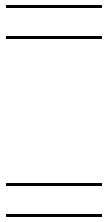TM 9-2610-200-14
2-85
CHAPTER 2. CARE, MAINTENANCE, AND INSPECTION (Con't)
SECTION V. GENERAL SUPPORT MAINTENANCE (Con't)
2-40. TIRE REPAIR PROCEDURES, SELF-VULCANIZING SPOT REPAIR.
This Task Covers: Repair
Initial Setup:
Materials/Parts:
Tire repair filler (Item 84, Appendix C)
Rubber buffer fluid (Item 100, Appendix C)
Vulcanizing fluid (Item 85, Appendix C)
Cement primer (Item 97, Appendix C)
Rag (Item 98, Appendix C)
Tools/Test Equipment:
Vacuum cleaner (Item 14, Appendix B) or
air nozzle
Air cooled finishing rasp (Item 45,
Appendix B)
Cementing and vulcanizing stitcher (Item
50, Appendix B)
Wheel Assembly Tool (Item 55, Appendix
B)
a. REPAIR
WARNING
Use cleaning fluids and vulcanizing fluids in a well-ventilated area. Read all warnings and
cautions on containers. Prolonged inhalation of fumes could cause health hazards.
1. Using an air cooled finishing rasp, remove all loose rubber and frayed cords from damaged area,
being careful to remove a minimum of material.
2. Buff an area 2 inches (5.1 cm) larger than actual area being repaired
WARNING
When using compressed air, always wear safety goggles to prevent dirt and debris from
going into eyes. Compressed airstream must be less than 30 psi (207 kPa).
3. Remove buffing dust with vacuum cleaner or air nozzle. Clean buffed area only with a rag wet with
rubber buffer fluid.
CAUTION
Do not contaminate repair area by touching applicator on uncleaned, unbuffed area around
repair. If area becomes contaminated, repair may fail when tire is returned to service.
4. Brush one coat of primer cement onto buffed area. Primer cement may also be applied to cord body.
Allow primer cement to dry for a minimum of 1 hour to a maximum of 24 hours. If allowed to dry
more than 24 hours, clean area with rubber buffer fluid and repeat this step.
5. Mix approximately equal amounts of A and B tire repair filler together in sufficient quantities to fill
damaged area.
6. Brush one coat of vulcanizing fluid over dried primer cement.

